24 Hours Hotline: +86 137-3541-1378
Email:info@tripstoshanghai.com
24 Hours Hotline: +86 137-3541-1378
Email:info@tripstoshanghai.com
Hangzhou Weather
Hangzhou has a humid subtropical climate, characterized by mild winters and hot, humid summers. Average annual temperatures typically range between 16°C and 18°C, with highs reaching over 33°C in peak summer months. The city experiences abundant rainfall, especially from April to June, due to the East Asian monsoon. Humidity levels are generally high year-round, often above 70%, making the air feel warmer in summer and chillier in winter. Thanks to its proximity to rivers and lakes, Hangzhou enjoys a lush natural environment, but the humidity can make the atmosphere feel misty and dense, particularly in spring and early summer.
Best Time to Visit Hangzhou
Hangzhou experiences four distinct seasons, each offering a unique charm to visitors. Spring (March to May) brings blooming flowers, fresh greenery, and pleasant temperatures, making it ideal for strolling around West Lake and exploring tea fields. Summer (June to August) can be hot and humid, but it’s the season when lotus flowers bloom across the lake and the lush Longjing tea plantations are at their peak. Autumn (September to November) is often considered the best time to visit, with comfortable weather, clear skies, and vibrant foliage reflecting in the water. Winter (December to February) is quieter and more serene—though temperatures drop, West Lake becomes tranquil, and occasional snowfall adds a poetic beauty. No matter the time of year, Hangzhou’s natural landscapes and cultural atmosphere offer a different kind of beauty with each season.
Hangzhou Spring (March, April, May)
Spring in Hangzhou runs from March through May, bringing a gradual warm-up from winter chill. Temperatures typically hover around 20°C, though fluctuations are common, especially early in the season. Rainfall is frequent during these months, with precipitation levels climbing steadily—expect wet afternoons and light fog rolling off the hills. After each shower, the city feels like it's been freshly painted: West Lake shimmers under the mist, and the gardens come alive with color. Spring is the ideal time to wander scenic paths, rent a bicycle, or take a calm boat ride across the lake.
What to Wear in Hangzhou Spring
Light outerwear like a hoodie, windbreaker, or thin sweater is usually enough for daytime. Long pants or jeans keep things comfortable, and don’t forget to bring an umbrella—spring showers can surprise you.
Seasonal Activities in Hangzhou Spring
Spring Blossoms at Prince Bay Park: Step into Prince Bay Park, a haven of seasonal blooms where cherry blossoms, tulips, magnolias, and peonies create a vibrant display of colors. In spring, the entire park feels like a festival of flowers, making it a perfect spot for photography and leisurely walks. Stroll along winding paths shaded by blossoming trees, where petals drift softly to the ground like pink and white snow. The air is filled with a sweet floral fragrance, and small bridges over tranquil ponds add to the park’s romantic charm. With vibrant flowerbeds, lush lawns, and picturesque lake views, Prince Bay Park offers one of the most enchanting spring experiences in Hangzhou.
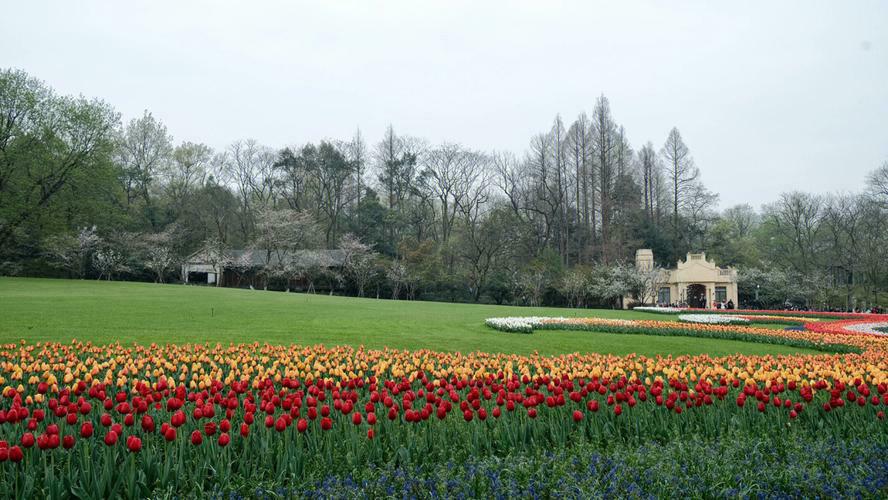
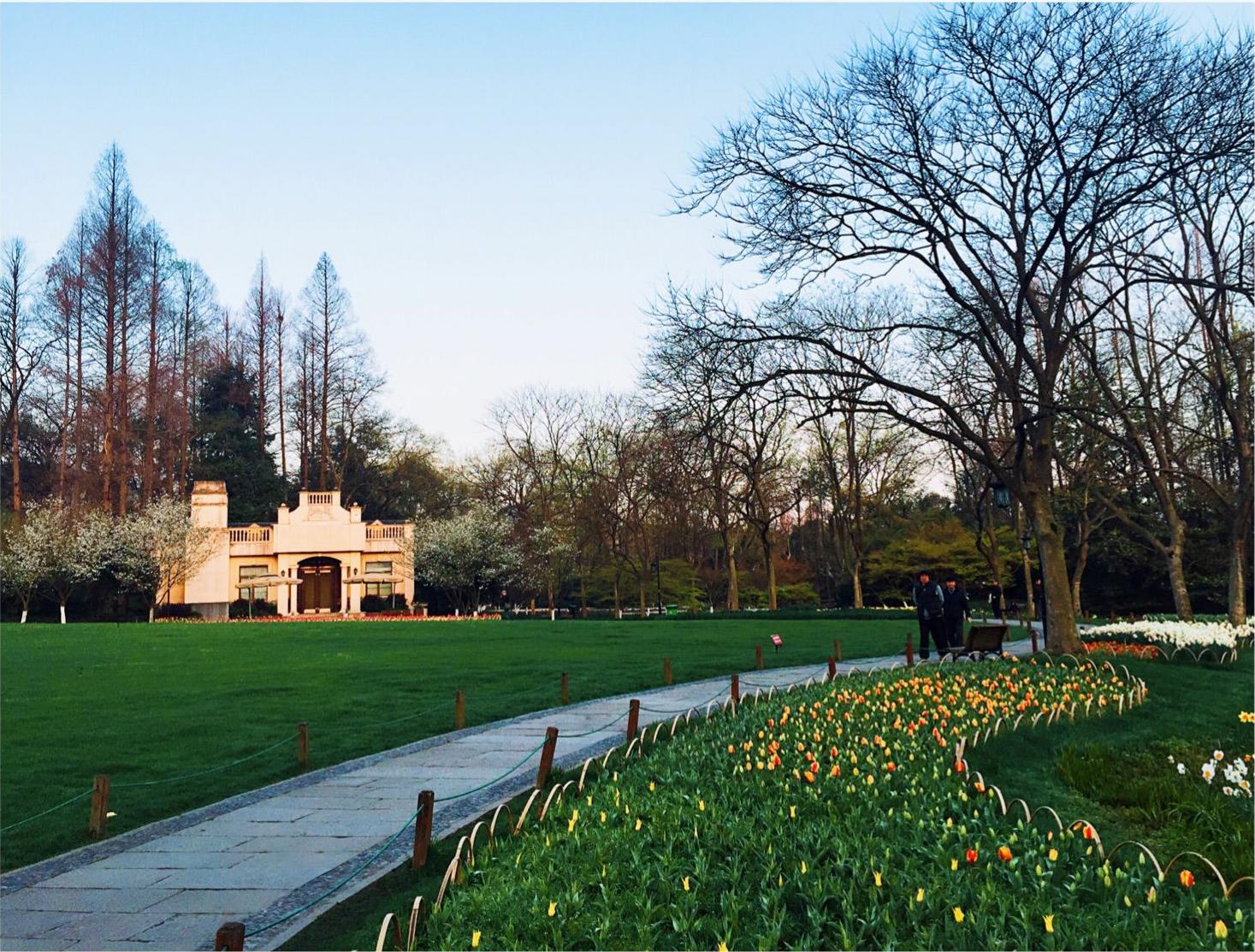
Explore Longjing Tea Fields: Head to the Longjing tea fields in Meijiawu or Dragon Well Village, where local farmers are busy with the spring harvest. Watch them hand-pick tender tea leaves, learn about the traditional roasting techniques, and enjoy freshly brewed Longjing green tea right at its source. As you wander through the rolling terraces, the fresh scent of tea leaves lingers in the air, blending with the earthy aroma of the surrounding hills. You can chat with local tea masters to hear fascinating stories about the centuries-old craft and even try your hand at roasting leaves over a traditional wok. Surrounded by lush greenery and peaceful countryside views, this immersive experience offers both relaxation and a deeper appreciation of Hangzhou’s tea culture.
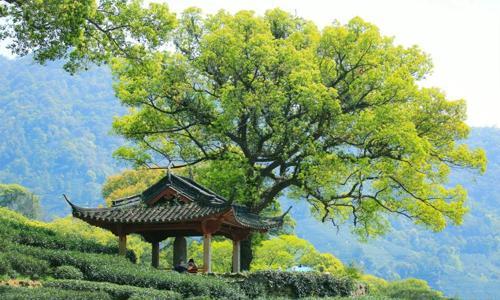
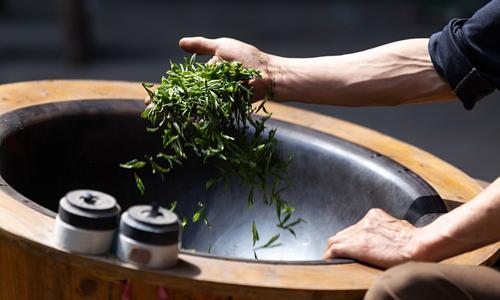
Discover the China National Tea Museum: Enhance your tea journey with a visit to the China National Tea Museum nearby. The museum offers interactive exhibits that showcase the history and culture of Chinese tea. You can also join tea-tasting sessions to savor different varieties and deepen your appreciation of this ancient tradition. Stroll through beautifully designed halls that display ancient tea sets, calligraphy, and artifacts tracing tea’s evolution from the Tang and Song dynasties to modern times. The museum’s tranquil gardens, complete with lotus ponds and bamboo groves, provide a serene setting to enjoy freshly brewed tea while overlooking scenic views of West Lake. It’s an ideal place to connect with the artistry, philosophy, and lifestyle behind China’s world-renowned tea culture.

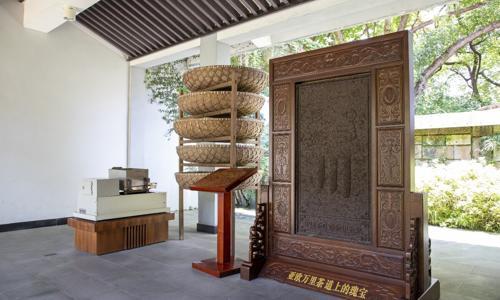
Scenes of West Lake in Spring
Dawn at Su Causeway in Spring: When you stroll along Su Causeway in spring, the entire landscape comes alive with fresh colors and gentle vitality. At dawn, a soft mist hovers above the lake, and the first rays of sunlight illuminate the delicate willow branches swaying in the breeze. Pink peach blossoms and pale green buds decorate the paths, creating a picturesque scene that feels like stepping into a classical Chinese painting. As you walk, you’ll sense the poetic charm that has inspired countless scholars and artists, including the famous Song dynasty poet Su Dongpo, who contributed to the causeway’s creation. The harmonious blend of water, flowers, and willow trees embodies the essence of traditional Chinese aesthetics and the deep cultural appreciation for nature’s rebirth in spring.
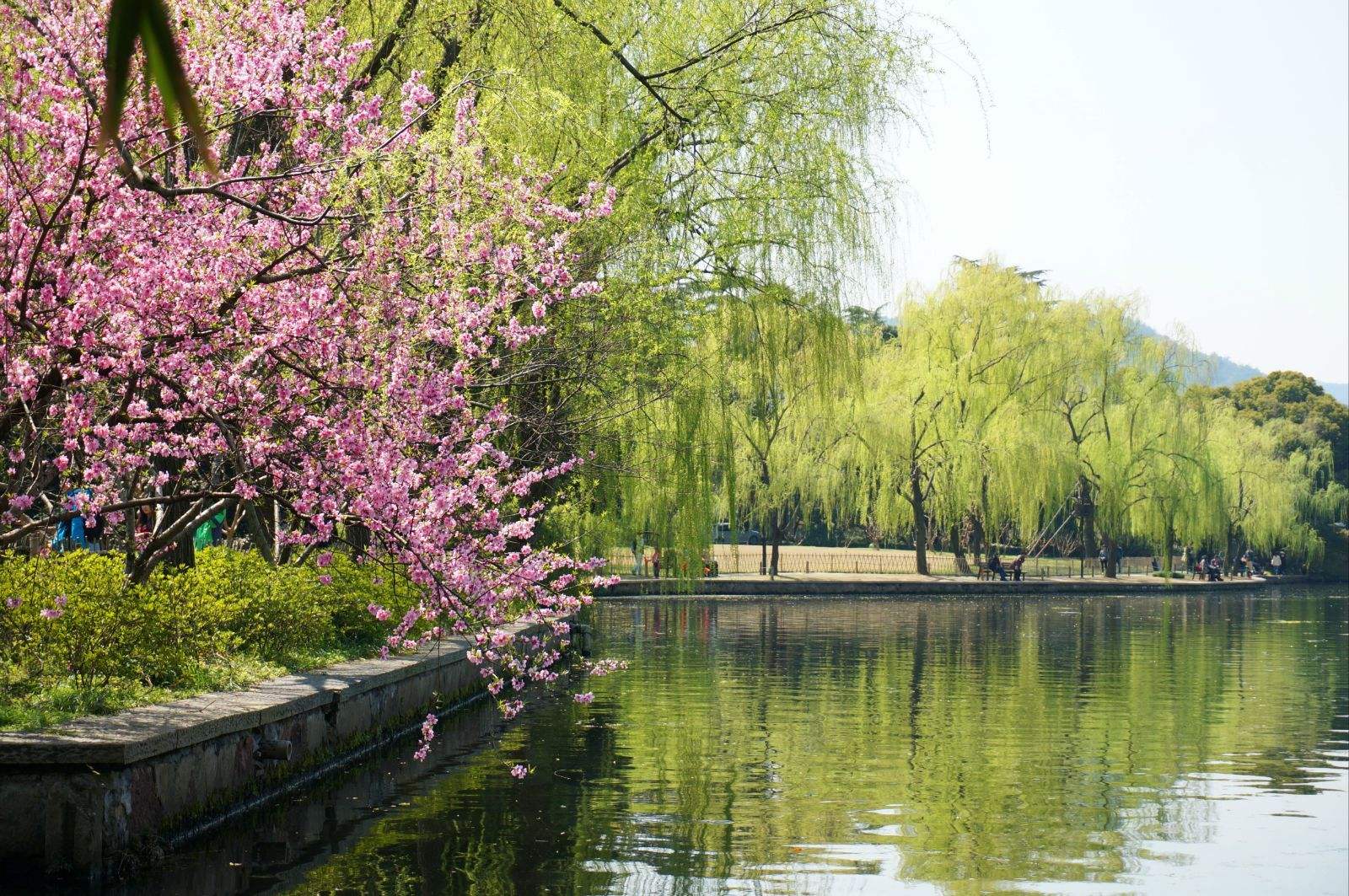
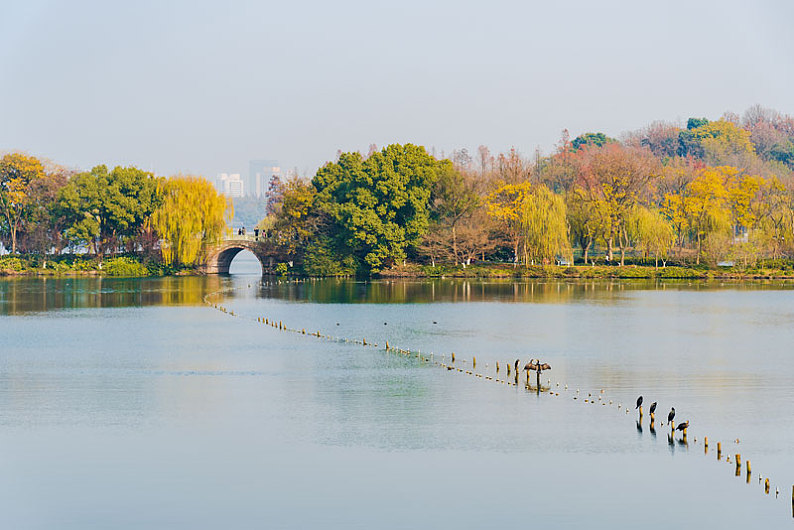
Fish Viewing at the Flower Pond: As you enter the Flower Pond Garden in spring, you are greeted by vibrant blossoms spilling over stone pathways and reflecting in the sparkling water. Carp swim gracefully beneath the surface, darting through clusters of aquatic plants, while butterflies and dragonflies hover over the flowers. The fragrance of blooming peonies and magnolias fills the air, creating a multisensory experience of renewal and vitality. Fish Viewing at the Flower Pond has long been celebrated in classical poetry and paintings for symbolizing harmony and prosperity, reflecting the traditional belief in the balance between humans and nature. Standing by the pond, you can pause to watch the lively fish and admire the surrounding blossoms, immersing yourself in a timeless expression of beauty and tranquility.
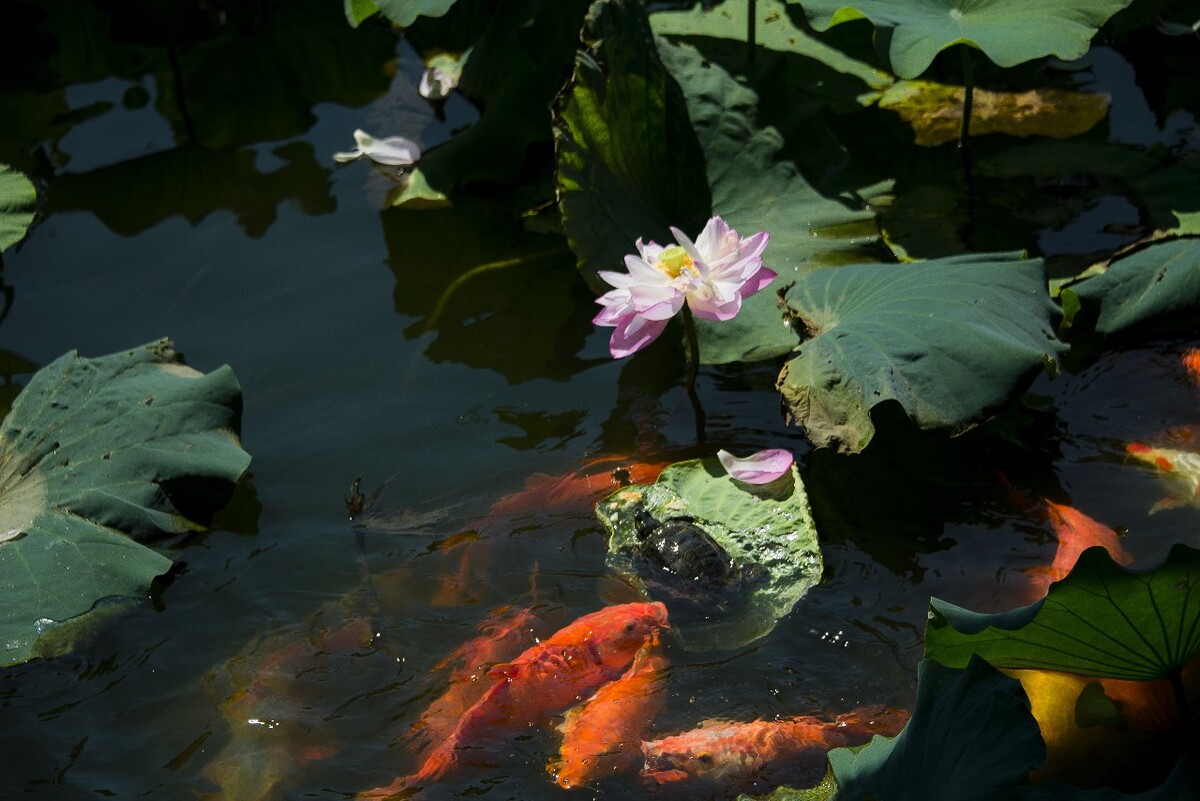
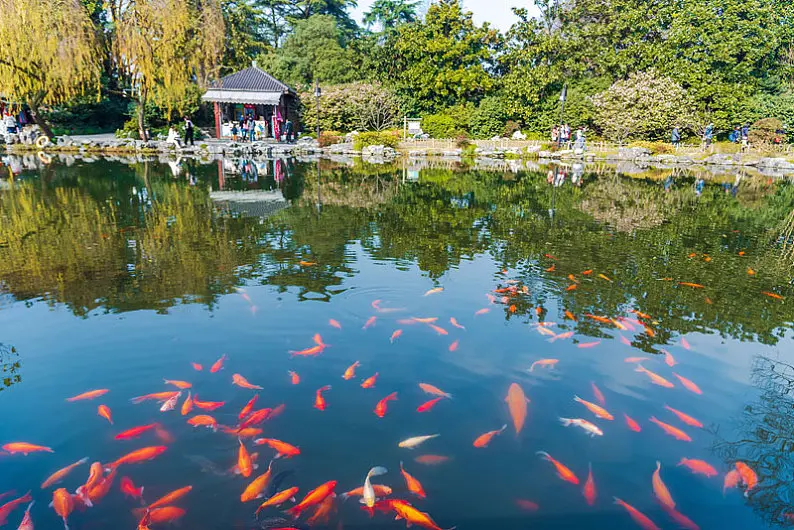
Orioles Singing in the Willows: As you wander through the park in spring, the scene around you bursts with life and color. Tender willow branches sway gently in the breeze, their new green leaves shimmering in the soft sunlight. Orioles Singing in the Willows lets you experience a lively symphony of nature as golden orioles perch among the willow trees, filling the air with their melodious songs. The lake sparkles nearby, reflecting the blossoms and greenery along the shore, while winding paths lead you through clusters of peach and plum flowers in full bloom. In Chinese culture, orioles symbolize vitality and joy, and for centuries, this scene has inspired poets and painters to capture the harmony between nature and emotion, making it a perfect place to embrace the awakening spirit of spring.
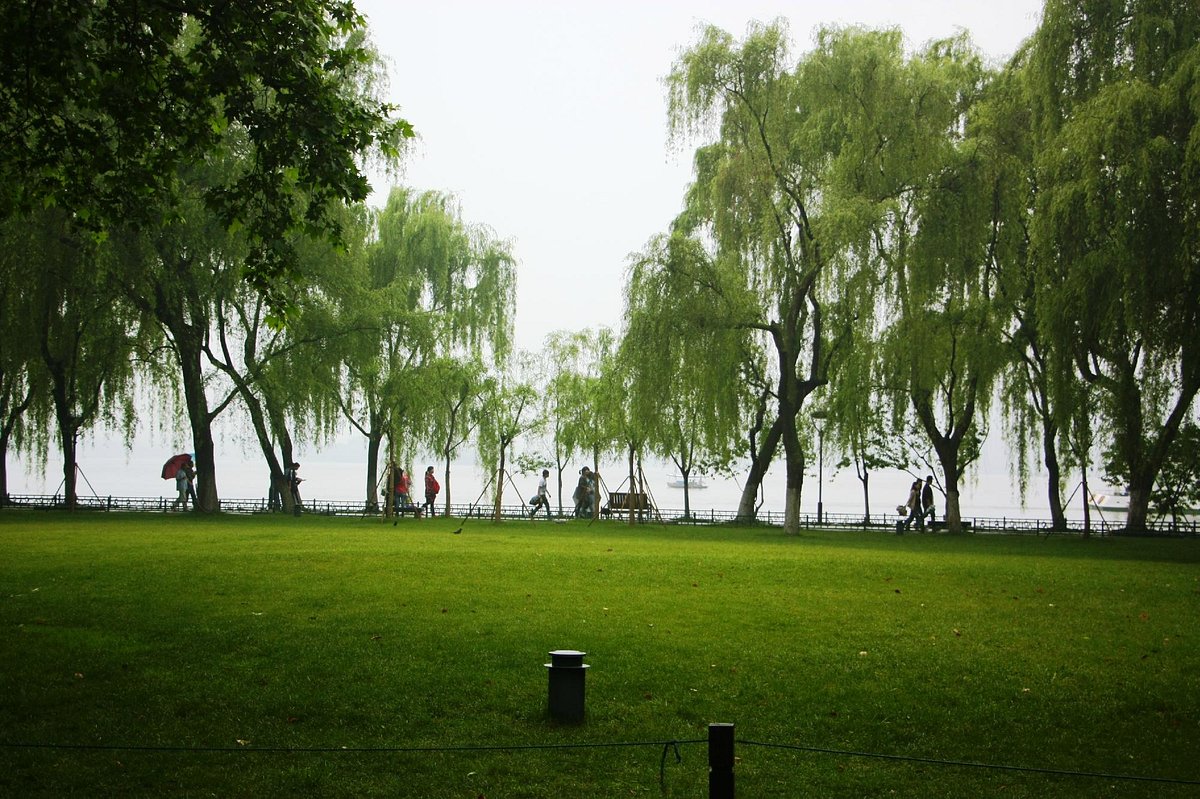
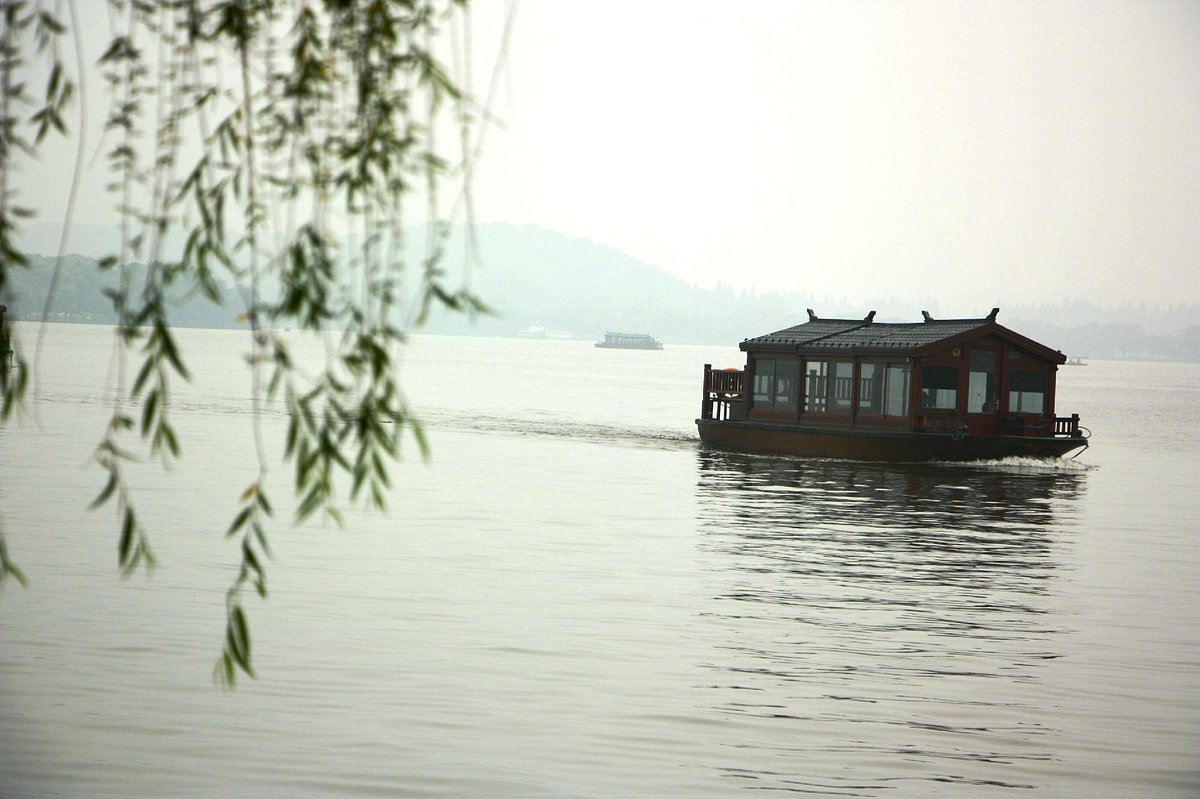
Dream of the Tiger Spring: When you arrive at the Tiger Spring in springtime, you’re welcomed by lush bamboo groves and the soothing sound of water bubbling from the earth. Dream of the Tiger Spring is famed for its crystal-clear mineral water, which ripples gently as it flows into stone basins, surrounded by blossoming camellias and azaleas. Legend tells of a white tiger guarding this spring, adding a sense of mystique and cultural depth to the site. In spring, the fresh air, delicate flower scents, and serene atmosphere make this spot a haven for contemplation. Ancient poets praised its pure water and tranquil beauty, and even today, you can sense why it has long been considered one of the finest springs in China, embodying both natural wonder and spiritual inspiration.

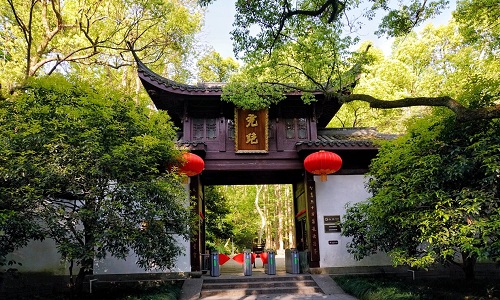
Festivals in Spring
March
Flower Festival (Huazhao Festival): This traditional holiday celebrates the arrival of spring and the birthday of flower deities. At Xixi Wetland, young people dressed in flowing Hanfu gather for flower-worshipping ceremonies, boat rides, and ancient-style music performances. It's like stepping into a living painting from the Tang Dynasty, filled with color and grace.
Blossom Season: March signals the full bloom of cherry blossoms and tulips across Hangzhou. Prince Bay Park (Taiziwan) is one of the most popular places to see them. Couples often come here for romantic photos under pink canopies, while families and photographers arrive early to claim the best picnic spots. The scent of spring fills the air, and everywhere feels vibrant and alive.
April
Qingming Festival (Tomb-Sweeping Day): Besides honoring ancestors, this is also a season for spring outings. Many locals visit cemeteries in the morning and spend the afternoon outdoors. Jiuxi and Yang Gong Causeway become popular with walkers and cyclists who come to enjoy blooming flowers, gurgling creeks, and birdsong. The mood is quiet but hopeful, reflecting a respect for both the past and the present.
Longjing Tea Festival: Held in the scenic tea-growing villages of Longjing and Meijiawu, this festival celebrates Hangzhou’s most famous product: Dragon Well green tea. Visitors can watch tea farmers hand-pick tender leaves and roast them in large iron pans using ancient techniques. Tasting freshly brewed tea on a bamboo bench, surrounded by lush hills and spring breezes, is a highlight for anyone visiting Hangzhou in April.
May
Labor Day Holiday (May 1–5): This is one of China’s biggest public holidays, and Hangzhou becomes a hotspot for domestic tourists. Expect crowds at major sites like Leifeng Pagoda, the Broken Bridge, and West Lake cruises. Streets are alive with music, street performers, and food vendors. If you’re looking for more peace, head to Tiger Spring or Yunqi Bamboo Trail where the crowds thin and the nature shines. Evenings are perfect for a stroll through West Lake Musical Fountain or grabbing a tea at a rooftop spot near Hubin Road.
China International Cartoon and Animation Festival: Hosted in Binjiang’s White Horse Lake area, this is China’s largest and most lively animation expo. The entire district turns into a colorful wonderland with parades, cosplay contests, and themed exhibitions. It draws in fans of anime, comics, and games from across Asia. Even if you’re not a hardcore fan, just walking around among the creative costumes and energy is pure fun.
Hangzhou Summer (June, July, August)
Summer in Hangzhou, stretching from June to August, is hot, humid, and full of energy. July tends to be the hottest month, with daytime highs frequently soaring past 33°C and sometimes brushing up against 40°C. While the rains are lighter than in spring, sudden downpours and the occasional typhoon—especially in late August—can still catch you off guard. Humidity levels stay high, and you’ll often see the city wrapped in a haze of heat and mist. But don’t let that stop you—this is when Hangzhou is bursting with vibrant greens, lotus blossoms, and long, glowing sunsets over West Lake.
What to Wear in Hangzhou Summer
Go light and breathable—shorts, cotton shirts, dresses, and sandals are all great. Sunglasses, hats, and sunscreen are must-haves, and staying hydrated is key. Always good to keep a small umbrella or raincoat handy just in case of a summer shower.
Seasonal Activities in Hangzhou Summer
Summer Retreats in Wuzhen and Xitang: Escape the summer heat by heading to nearby water towns like Wuzhen or Xitang. With shaded alleyways, flowing canals, and traditional stone bridges, these ancient towns offer a slower, cooler vibe perfect for a summer getaway. Wooden houses line the waterfront, lanterns sway in the breeze, and small boats glide silently along the canals, giving you a glimpse into the charm of old Jiangnan life. In the early mornings, light mist rises above the waterways, creating a dreamlike atmosphere, while evenings are illuminated by glowing lanterns reflecting on the rippling water. You can sip freshly brewed tea in a riverside teahouse, sample local delicacies like soy-braised pork, or simply sit by the canal and watch the world drift by. It’s a perfect escape where history, culture, and tranquility flow together.
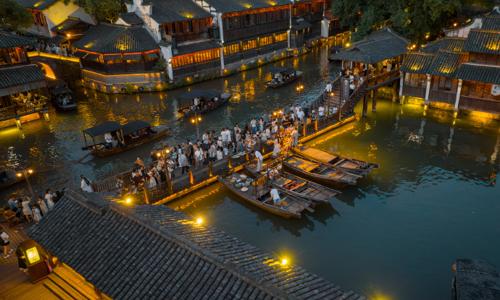
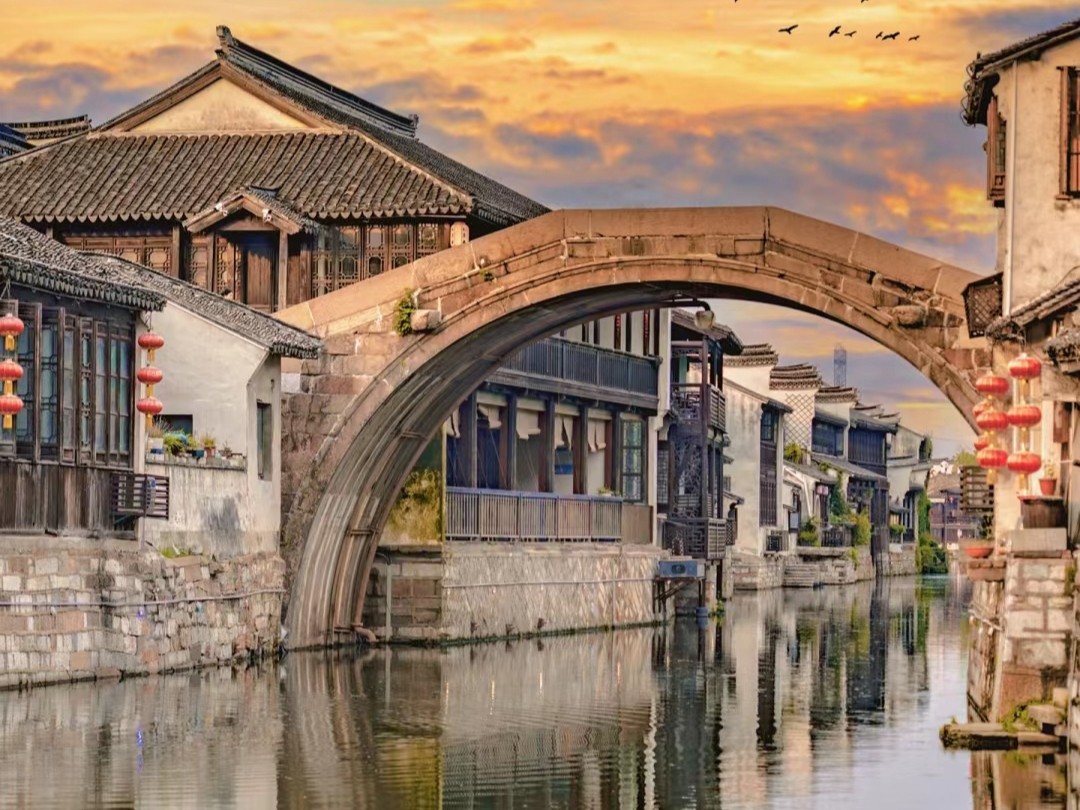
Nature Escape at Xixi National Wetland Park: Wander through Xixi National Wetland Park, where winding waterways mirror layers of lush greenery and dragonflies skim gracefully over the surface. Wooden walkways lead you through quiet wetlands filled with birdsong and gentle ripples, offering a calm, refreshing escape from the city heat. It feels like stepping into nature’s air conditioner, making it an ideal spot to relax, recharge, and connect with Hangzhou’s natural beauty. Along the way, you might spot egrets gliding low over the ponds, lotuses blooming in hidden corners, and traditional thatched pavilions tucked among the reeds. Boat rides offer a peaceful way to explore deeper into the wetlands, where reflections of trees and skies blur together in a soothing palette of green and blue, creating a true summer sanctuary.
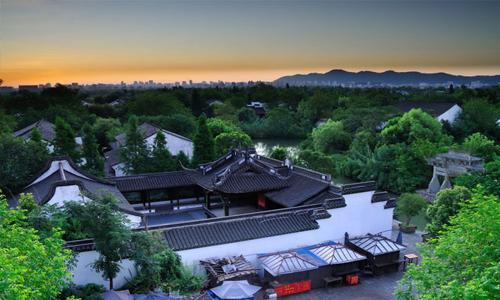
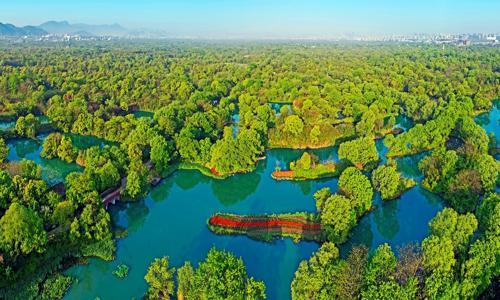
Scenes of West Lake in Summer
Lotus in the Breeze at Quyuan Garden: Walkways zigzag through a sea of lotus, their leaves gently rustling under the sun. More than 100 species of lotus fill the ponds, and the occasional breeze makes the petals dance. You can pause at the pavilions and bridges to admire the harmony between water, plants, and architecture. As you explore, you’ll also feel the garden’s literary and cultural heritage, commemorating Qu Yuan, the famous poet of the Warring States period. Calligraphy inscriptions and classical pavilions allow you to connect with the traditional Chinese appreciation for nature, art, and human sentiment.
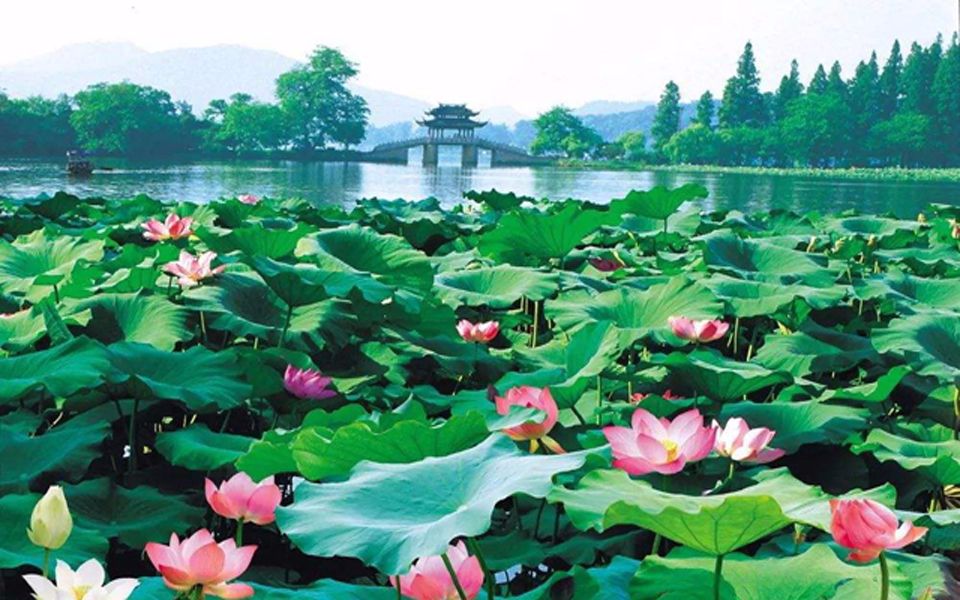

Leifeng Pagoda at Sunset: As the sun dips low, the pagoda glows gold against the skyline, casting long reflections on the lake. The sky turns orange, pink, and red, and everything around you feels painted in warm light. Walking along the lakeside, you can enjoy both the majestic architecture and the peaceful ambiance. Beyond the scenery, you’ll discover the cultural stories associated with the pagoda, including the Legend of the White Snake, one of China’s most beloved folk tales. Inscriptions and architectural details invite you to immerse yourself in centuries of storytelling, spirituality, and visual grandeur.
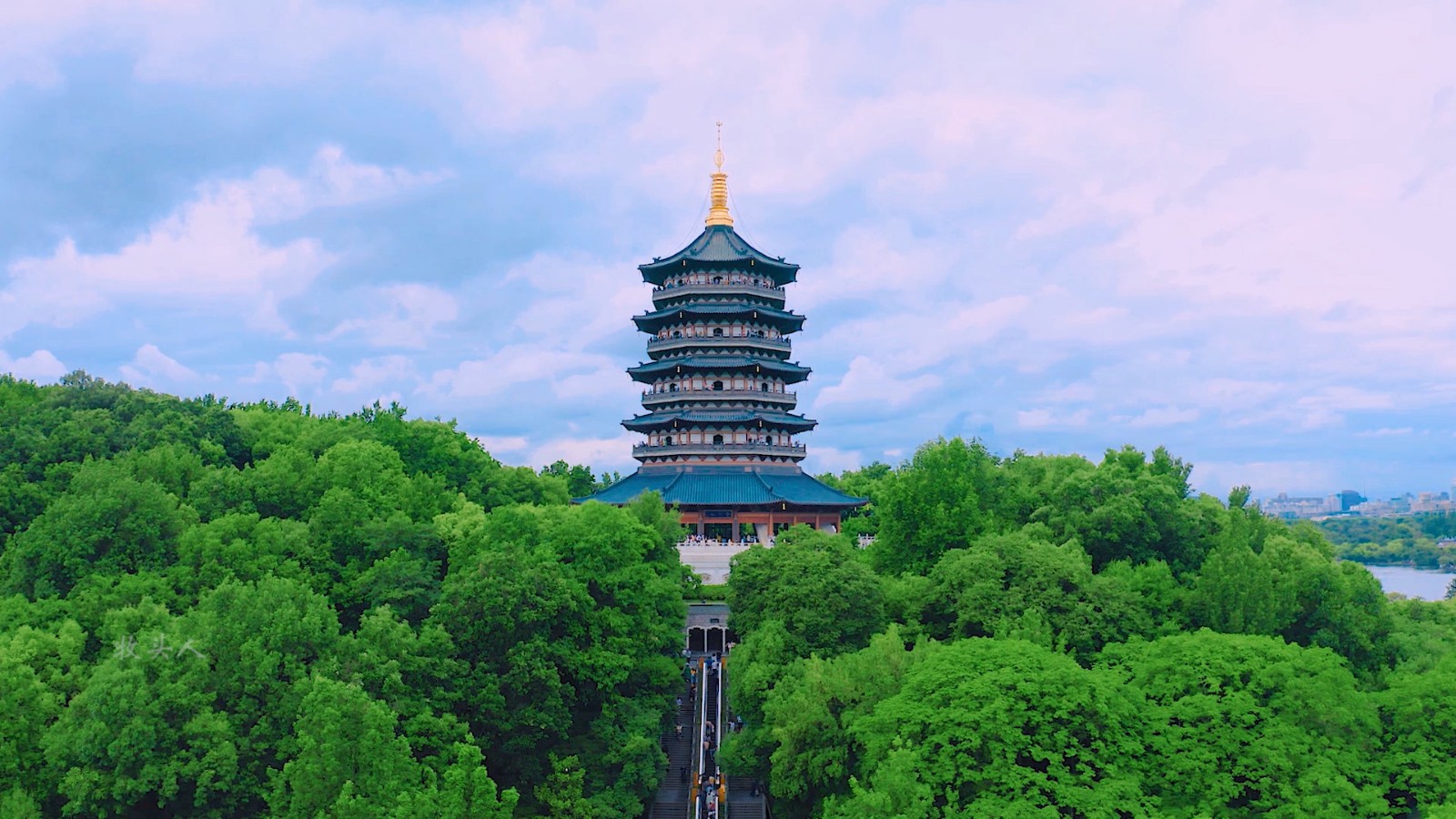
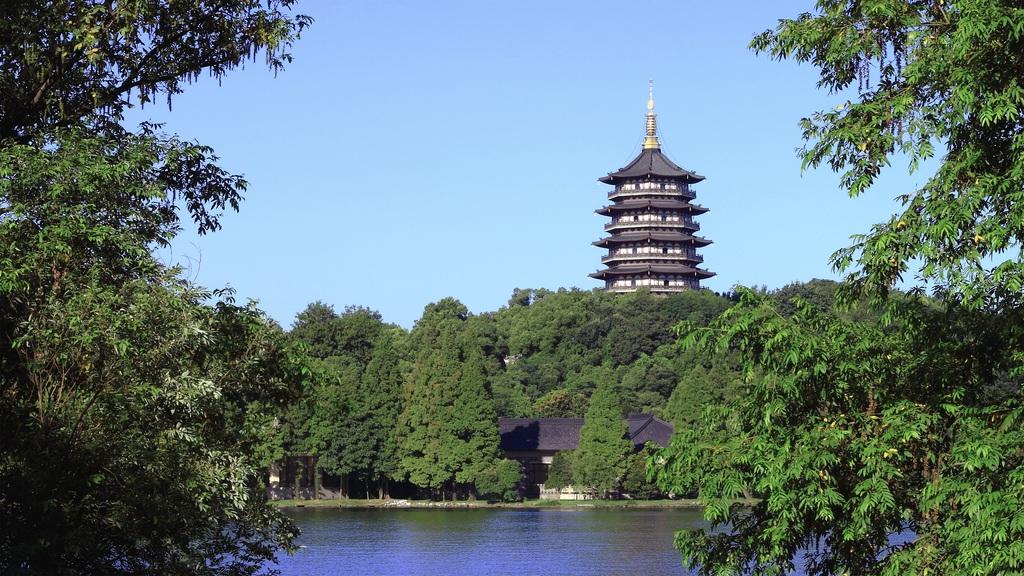
Evening Bells at Nanping Hill: As you stroll along the south shore of West Lake in summer, the lush greenery and shimmering water set a tranquil scene. Evening Bells at Nanping Hill – Down by the shore, the sound of bells from Jingci Temple floats through the trees each evening, echoing gently across the lake and hills. In summer, lotus blooms dot the water’s surface and dragonflies flit across the reeds, while the warm breeze carries the delicate fragrance of lotus and wildflowers. You can pause to listen to the bell’s resonant chimes, a sound that has inspired poets and painters for centuries, reminding you of the deep cultural and spiritual heritage that permeates this area.
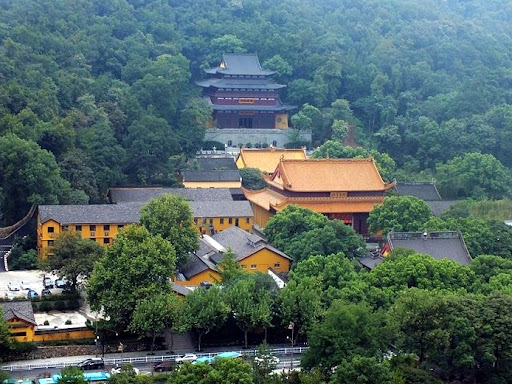
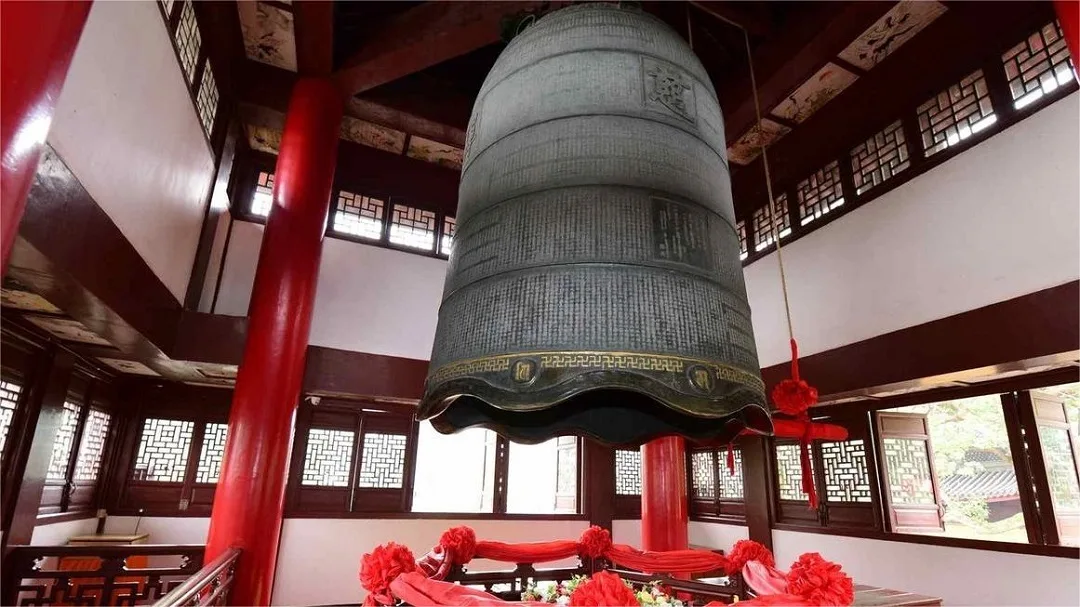
Bamboo Trail at Yunqi: Stepping onto the Bamboo Trail at Yunqi, you are immediately enveloped by a cool, shaded sanctuary. In summer, sunlight filters through the dense bamboo leaves, creating dappled patterns on the winding path, while tiny streams gurgle alongside, adding a soothing soundtrack to your walk. This serene escape from the city bustle allows you to feel the harmony between humans and nature, a central theme in Chinese garden and landscape philosophy. As you wander deeper into the groves, you’ll notice inscriptions and small pavilions that reflect traditional literary and artistic culture, inviting you to slow down, reflect, and connect with centuries of Chinese appreciation for tranquility and natural beauty.
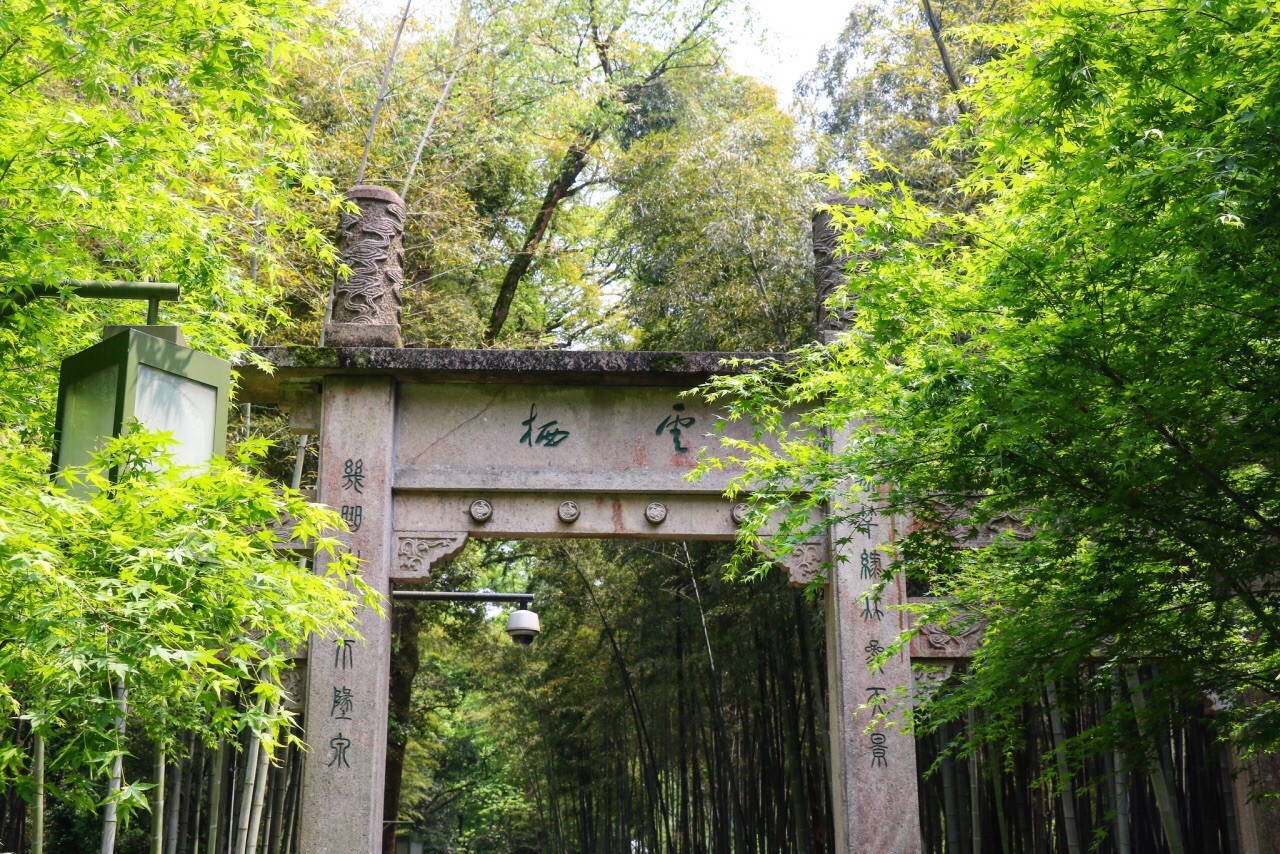
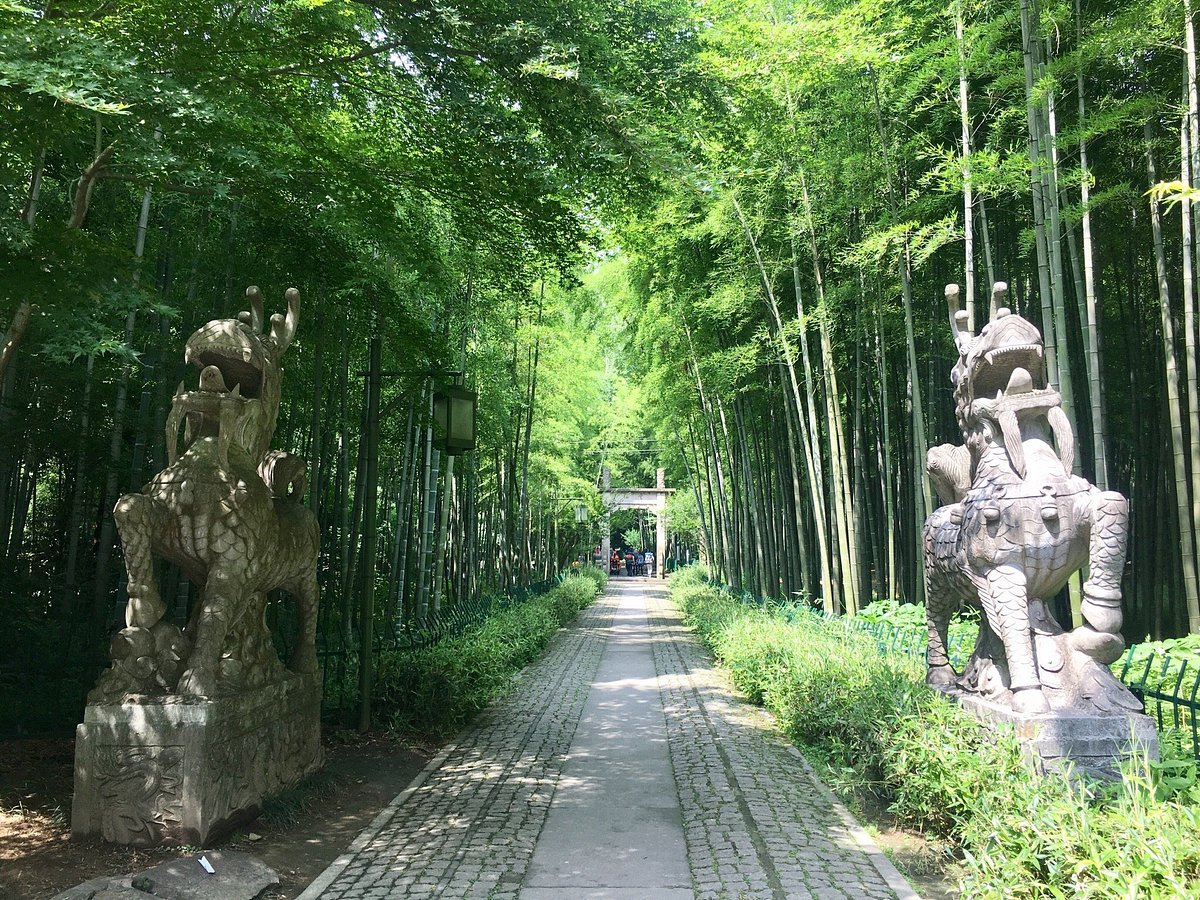
Festivals in Summer
June
Dragon Boat Festival: Held on the fifth day of the fifth lunar month, this is one of Hangzhou’s most traditional holidays. Head out to riverside areas like Fuyang or Jiande to catch the dramatic dragon boat races where locals cheer for their neighborhood teams. Before or after the races, try sticky rice dumplings called zongzi, which are filled with meats, beans, or sweet fillings and wrapped in bamboo leaves. You’ll also see mugwort and calamus hung on doors as symbols of protection.
Rainy Season (Meiyu): The start of summer in Hangzhou is also the beginning of the Meiyu or plum rain season. Frequent light rains fall across the city, and the air becomes lush and fragrant. West Lake is at its most poetic this time of year. Thin mist hovers above the water, trees drip with dew, and the landscape resembles an old ink-wash scroll. Bring an umbrella and embrace the moody beauty of early summer.
July
West Lake Lotus Season: By mid-July, the lotus flowers around West Lake reach full bloom. Quyuan Fenghe (Breeze-ruffled Lotus at Quyuan Garden) is the most iconic viewing spot. The ponds are covered in green pads with pink and white flowers swaying gently in the breeze. Early morning is the best time to go, when the air is cooler and the petals are open. It’s a favorite season for photographers, painters, and romantic morning walks.
August
Qixi Festival (Chinese Valentine’s Day): Celebrated on the seventh day of the seventh lunar month, this romantic holiday brings couples to spots like Bai Causeway and Orioles Singing in the Willows. Lakeside restaurants offer special menus for the night, often with flowers, candles, and heart-shaped desserts. The dreamy evening air and moonlit water make it a favorite date night for locals and visitors alike.
Qiantang River Tidal Bore Begins: Starting in mid to late August, the Qiantang River’s famous tidal bore begins to rise. In places like Yanguan in Haining or Wenyan in Xiaoshan District, you can watch the river’s water suddenly surge forward like a moving wall. It’s a rare natural phenomenon that’s both thrilling and unique to this region. Locals host mini fairs and food stalls near the viewing areas, turning it into a festive community event.
Hangzhou Autumn (September, October, November)
From September to early November, Hangzhou enjoys crisp air, low humidity, and a refreshing breeze, making it one of the most pleasant times to explore the city. Although temperatures are cooler compared to spring, especially with October averaging around 18°C and November dropping to about 12°C, the abundance of sunny days keeps the afternoons comfortably warm. Rain becomes less frequent, and with total rainfall under 300mm across these three months, outdoor activities like hiking, cycling, and sightseeing are especially enjoyable.
What to Wear in Hangzhou Autumn
Comfortable clothing such as light sweaters, hoodies, and long pants are perfect for autumn weather. A lightweight jacket should be enough for early fall, but as the season transitions, thicker outerwear is a good idea, particularly for those visiting nearby water towns where the air can feel cooler.
Seasonal Activities in Hangzhou Autumn
Experience the Qiantang River Tidal Bore: Around the 18th day of the eighth lunar month, the Qiantang River puts on a spectacular show with its famous tidal bore, one of the largest in the world. The roaring waves surge upstream with incredible force, creating a thrilling scene for tide-chasers along the riverbanks. For the best vantage point, head to Liuhe Pagoda, where you can watch the mighty tides from above while enjoying panoramic river views. Spectators often gather with cameras and binoculars, marveling at the dramatic clash between nature’s power and the calm surroundings. Vendors line the riverbanks selling snacks and souvenirs, adding a festive atmosphere to the event. In the evenings, the energy of the rushing tides contrasts beautifully with the serene, moonlit calm of West Lake, offering a perfect balance between excitement and tranquility, and leaving visitors with an unforgettable impression of Hangzhou’s natural spectacle.
Autumn Colors Around West Lake: Around the 18th day of the eighth lunar month, the Qiantang River puts on a spectacular show with its famous tidal bore, one of the largest in the world. The roaring waves surge upstream with incredible force, creating a thrilling scene for tide-chasers along the riverbanks. For the best vantage point, head to Liuhe Pagoda, where you can watch the mighty tides from above while enjoying panoramic river views. As the tide approaches, the air vibrates with anticipation, and the sound of rushing water echoes across the city, drawing crowds who cheer and marvel at nature’s power. Local photographers capture the dramatic waves as they curl and crash, while small boats bob safely in the distance. In the evenings, the energy of the rushing tides contrasts beautifully with the serene, moonlit calm of West Lake, where lanterns reflect softly on the water, offering a perfect balance between exhilaration and peaceful contemplation.
Osmanthus Fragrance Along Manlong Guiyu: Autumn in Hangzhou is synonymous with the delicate, sweet scent of osmanthus flowers that fills the air across the city. For the most immersive experience, drive or cycle along Manlong Guiyu or Hupao Road, where the fragrance lingers beneath canopies of golden leaves. The roads are lined with osmanthus trees in full bloom, creating a sensory delight for both sight and smell. As you wander or ride, the gentle breeze carries the floral aroma, mingling with the crisp autumn air and the rustle of fallen leaves underfoot. Street-side vendors offer osmanthus-flavored pastries, teas, and jams, while locals gather in gardens and parks to enjoy the blossoms, making every stroll or ride a fully immersive experience. This seasonal aroma is so iconic that it defines Hangzhou’s autumn, leaving visitors with lasting memories of both the city’s beauty and its fragrant charm.

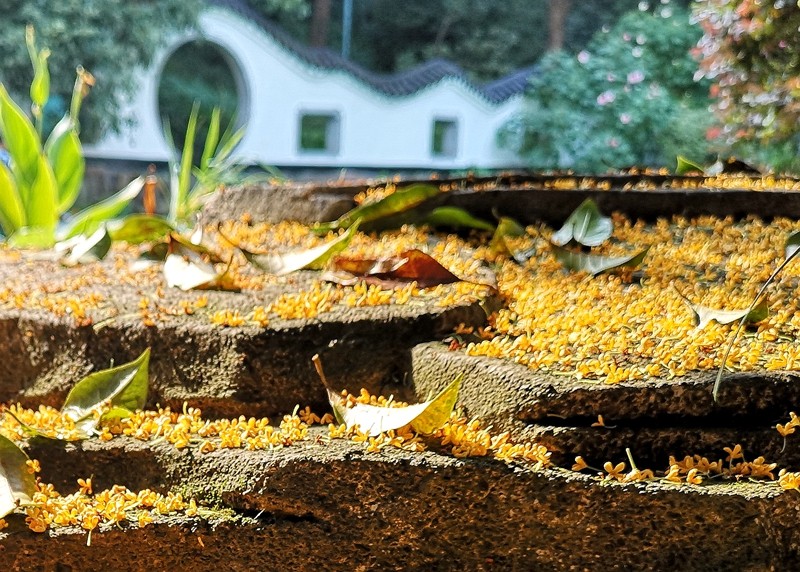
Scenes of West Lake in Autumn
Moon over the Peaceful Lake in Autumn: As you stand by the lake on a crisp autumn evening, the calm water reflects the silvery moonlight, creating a serene and almost ethereal scene. Moon over the Peaceful Lake in Autumn – The golden ginkgo leaves drift gently onto the water, while the surrounding trees glow in shades of amber, red, and orange. The soft ripples of the lake and the quiet rustle of autumn leaves make it easy to feel a deep sense of peace. You can pause to take in the view, reflecting on how Chinese poets and painters have long been inspired by this harmony of moonlight, water, and seasonal change, turning fleeting moments into timeless art.
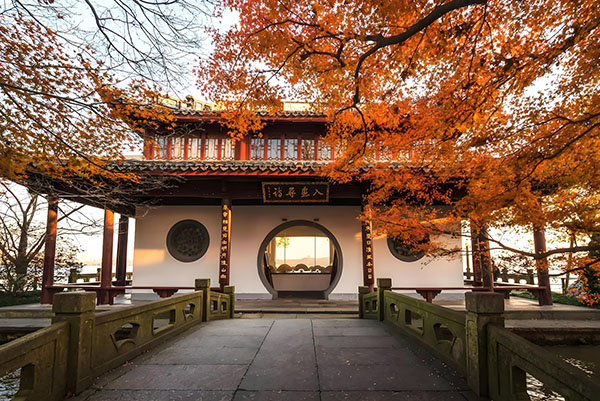
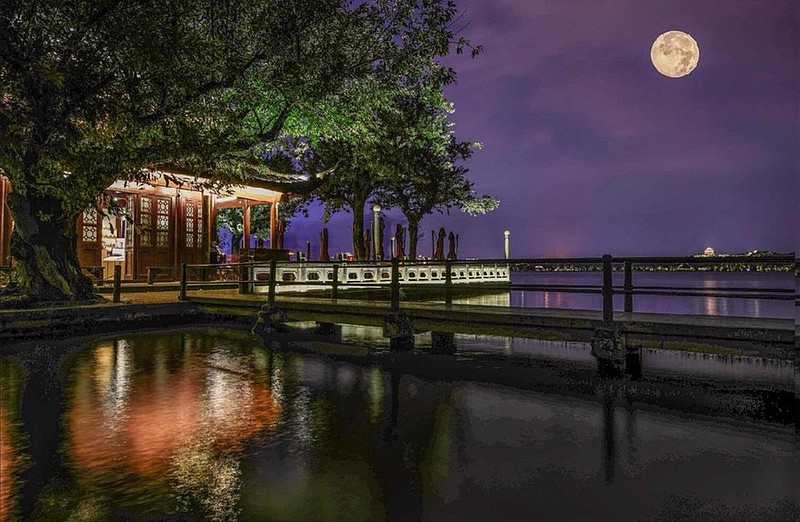
Three Ponds Mirroring the Moon: As you stroll along the water’s edge, you’ll encounter the Three Ponds Mirroring the Moon, a scene that becomes particularly enchanting in autumn. The cool autumn air carries the scent of chrysanthemums and fallen leaves, while the still ponds capture perfect reflections of the moon, creating the illusion of multiple moons hovering above the water. This site is steeped in cultural significance, celebrated in classical poetry and paintings for its symbolic connection between heaven and earth. Standing here, you can feel the centuries-old appreciation for nature, contemplation, and the cyclical beauty of the seasons that is central to Chinese artistic and spiritual traditions.

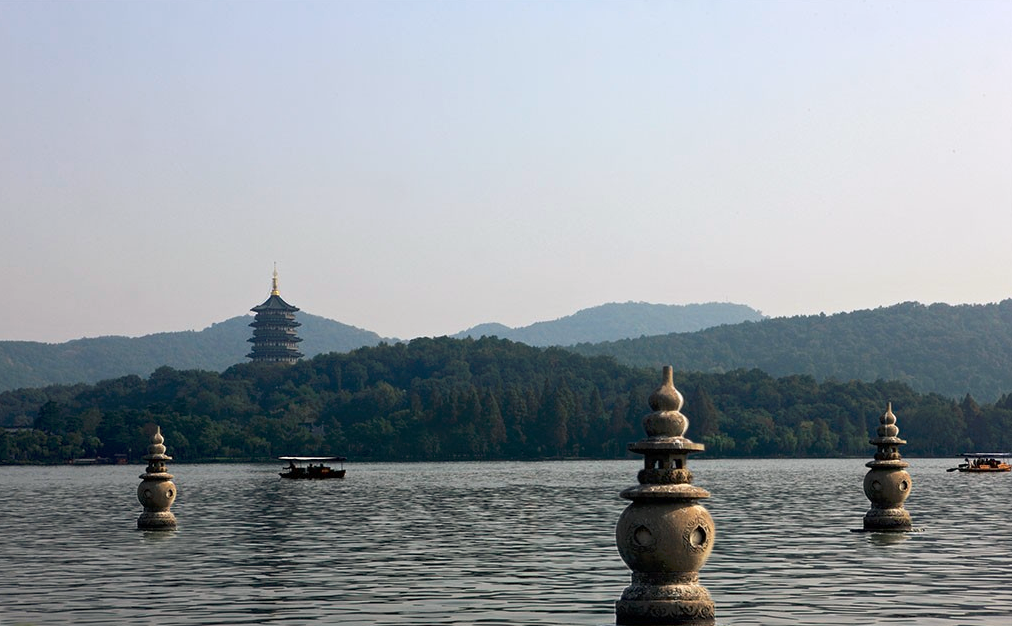
Two Peaks Piercing the Clouds: As you approach the towering peaks in autumn, the crisp air makes every breath feel refreshing, and the golden sunlight casts dramatic shadows across the rugged cliffs. The peaks rise majestically above the surrounding hills, often shrouded in thin wisps of mist that give them a mystical, otherworldly quality. In autumn, maple and ginkgo trees at the base of the mountains turn vibrant shades of red, orange, and yellow, creating a striking contrast with the gray stone. As you gaze upward, you can feel the sense of awe that has inspired generations of poets and painters, reflecting the traditional Chinese reverence for the grandeur of nature and its spiritual symbolism of perseverance and aspiration.
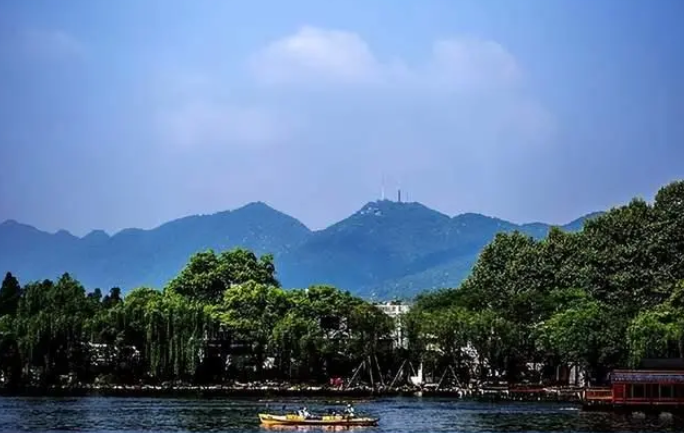
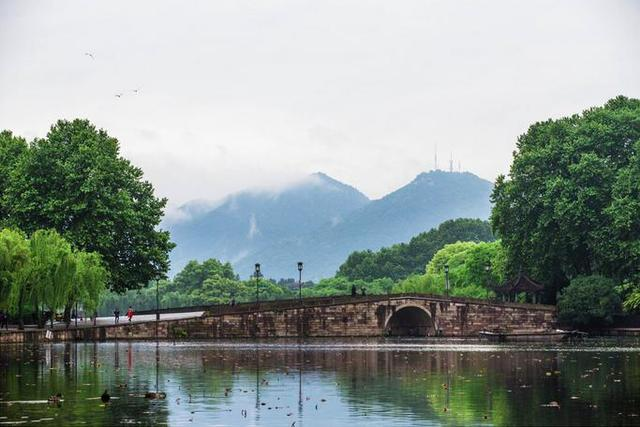
Osmanthus Flower Sea at Manjuelong Village: Walking through Manlong in autumn, you are immediately greeted by the delicate, sweet scent of blooming osmanthus trees. Golden leaves carpet the ground, and clusters of tiny flowers release their perfume into the crisp air, creating a sensory experience that delights both sight and smell. In this season, the gentle sunlight filters through the trees, illuminating the courtyard and pavilions in warm hues. You can pause to inhale the fragrance, a ritual that has long been associated with poetry, painting, and Chinese cultural traditions celebrating seasonal beauty, elegance, and refined appreciation of nature.
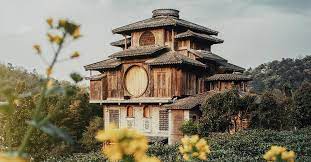

Festivals in Autumn
September
Mid-Autumn Festival: Best time for moon-gazing—locals head up Baoshi Hill or enjoy osmanthus wine while viewing the full moon over West Lake.
Qiantang Tidal Bore Festival: Peaks near the Mid-Autumn Festival. Expect traditional music, snacks, and a spectacular natural show.
West Lake Osmanthus Festival: the osmanthus is the city's official flower so the blooming of this beautiful natural creation is celebrated during September and October of every year at locations such as the Hangzhou Arboretum, Man Jue Long Village and Man Long Gui Yu Park.
China International Qiantang Tide-Watching Festival: visitors come from far and wide to witness this unique and fascinating lunar-influenced phenomenon that brings waves several metres in height to the Qiantang River. Traditional folk dancing displays accompany the proceedings.
October
National Day Golden Week (Oct 1–7): Huge domestic crowds. Consider exploring less-visited areas like Yunqi Bamboo Trail or Xixi Wetland.
Hangzhou Marathon: Runners pass West Lake, the Grand Canal, and Qianjiang River—ideal for active travelers who want scenery with their steps.
West Lake International Fireworks Show: is a giant fireworks display that's held at the West Lake and features the best firework creations from around the globe.
Mid Autumn Festival: on the 15th day of the eighth lunar month, Hangzhou's locals celebrate this important lunar calendar festival with traditional dancing and singing and the preparation and consumption of crescent moon-shaped cakes.
Hangzhou Silk Festival: aiming to promote silk as a material for creating clothing garments, home furnishings and lifestyle products and to reinforce Hangzhou's status as one of the world's premier silk producing cities.
November
Sweet Osmanthus Festival: Manjuelong village and Lingyin’s trails are filled with the scent of golden blossoms—perfect for slow strolls and warm photos.
Autumn Foliage Viewing: Jiuxi and Yang Gong Causeway become flame-colored—great for quiet nature escapes or landscape photography.
West Lake Fair: beginning in October and running into November, this annual event is a cultural celebration that has been a feature of the city since 1929. Both the International Fireworks Show and the Silk Festival are a part of this event.
Hangzhou Winter (December, January, February)
From December to February, Hangzhou enters its chilliest season. January is typically the coldest, with average temperatures hovering around 4°C. Though snowfall is not frequent, when it does occur, it blankets the West Lake and nearby hills, turning the city into a peaceful winter wonderland. Rainfall during these months averages around 100 millimeters per month.
What to Wear in Hangzhou Winter
Hangzhou winters are damp and cold, and without central heating, the chill can seep in. Be sure to pack thick outerwear such as down jackets or wool coats. Accessories like beanies, scarves, gloves, and insulated boots are also essential to stay warm, especially during long strolls around the lake.
Seasonal Activities in Hangzhou Winter
Plum Blossoms at Gushan, Lingfeng, and Chaoshan
For nature lovers, winter offers the unique charm of plum blossoms in full bloom. At Gushan, Lingfeng, and Chaoshan, red and white plum flowers emerge against the crisp winter air, filling the surroundings with their delicate fragrance. Walking along winding paths through these scenic spots, visitors can admire the intricate blossoms clinging to bare branches, a symbol of resilience and beauty in the cold season. The subtle scent of plum blossoms enhances the tranquil atmosphere, making it a refreshing escape into nature during Hangzhou’s quieter months. Early mornings bring a soft frost that sparkles on petals, and the gentle sunlight filtering through the branches casts playful shadows on the paths. Visitors may also encounter local artists sketching or photographing the blooms, adding a quiet, creative energy to the serene winter landscape.
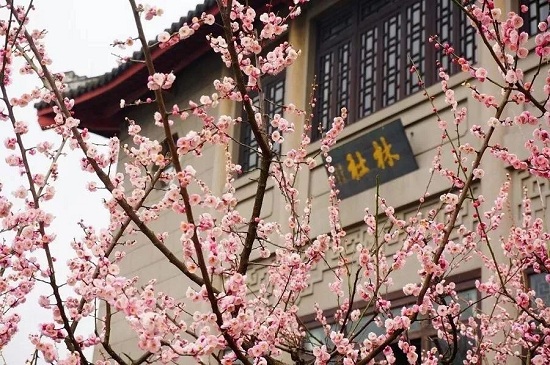
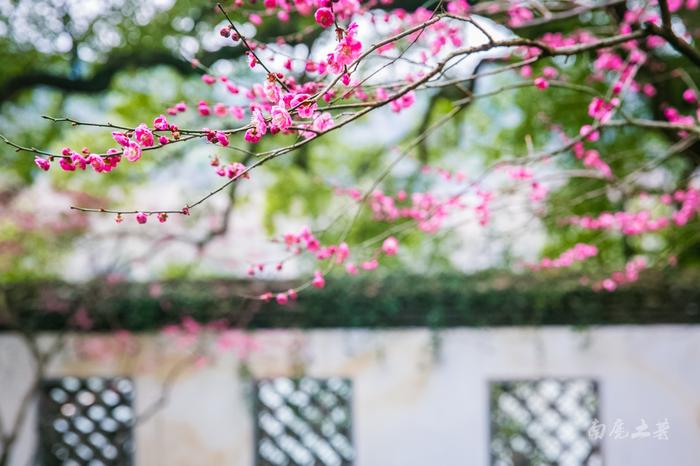
Winter Entertainment at Song Dynasty Town
A visit to Song Dynasty Town during winter combines entertainment with cultural richness. The immersive show “The Romance of the Song Dynasty” is performed year-round, bringing history to life through vibrant performances, acrobatics, and storytelling. Winter visits may also coincide with traditional festivals such as the Lunar New Year temple fair, offering colorful decorations, local delicacies, and festive activities. Strolling through the town, visitors can admire the meticulously reconstructed Song-era streets and buildings, where red lanterns sway in the cold breeze and the scent of roasted chestnuts and sweet dumplings fills the air. Street performers, artisans, and musicians add dynamic energy to every corner, while interactive workshops allow guests to try traditional crafts, calligraphy, or games. The combination of live performances, historic architecture, and seasonal celebrations makes Song Dynasty Town a lively and culturally enriching winter destination that appeals to both adults and children.
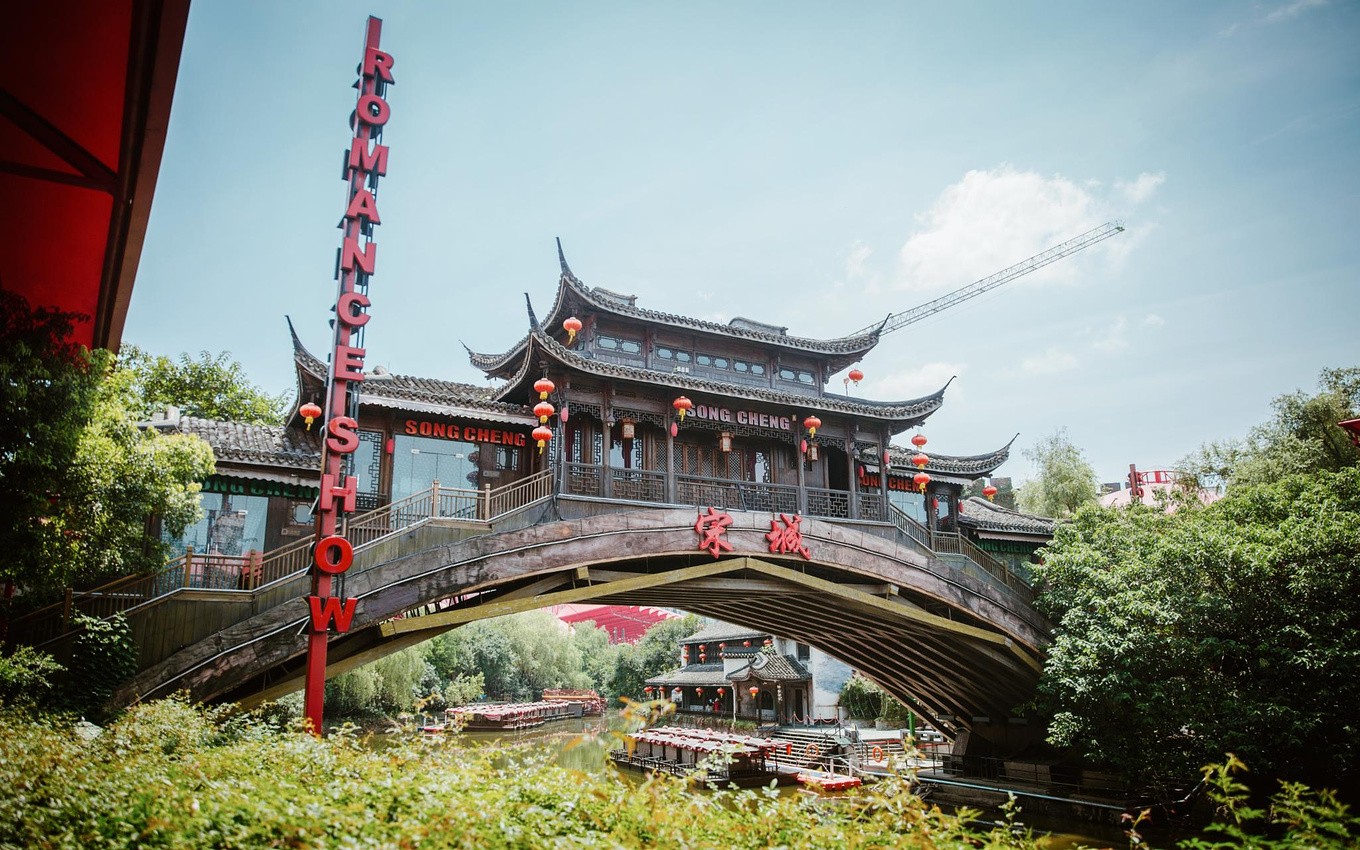
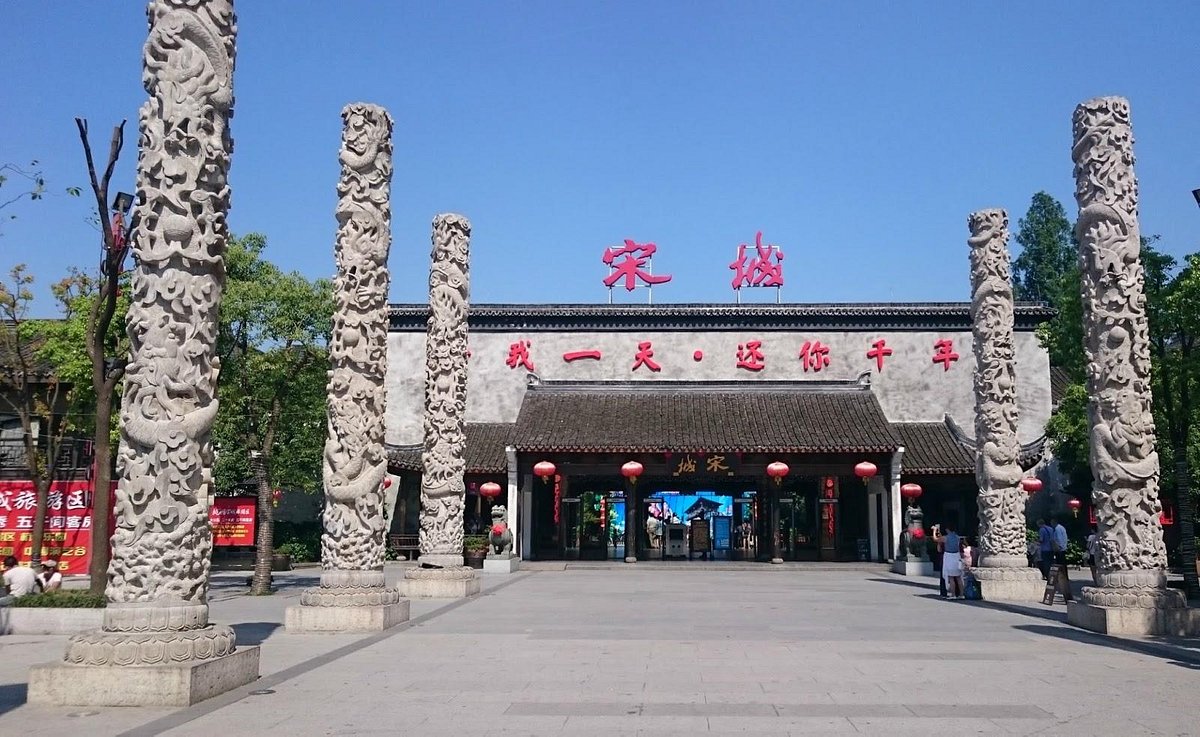
Scenes of West Lake in Winter
Lingering Snow on the Broken Bridge: As you approach the Broken Bridge in winter, a soft layer of snow blankets the walkway and the surrounding trees, creating a serene and almost silent landscape. Lingering Snow on the Broken Bridge allows you to admire the delicate frost patterns on the railings and the gentle reflections on the partially frozen lake beneath. The snow highlights the bridge's elegant curve, making it a favorite subject for painters and photographers alike. As you stand there, you can feel the poetic atmosphere that has inspired countless Chinese poets, symbolizing the fleeting beauty of nature and the contemplative spirit of winter in traditional culture.
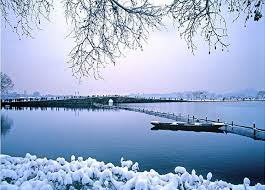
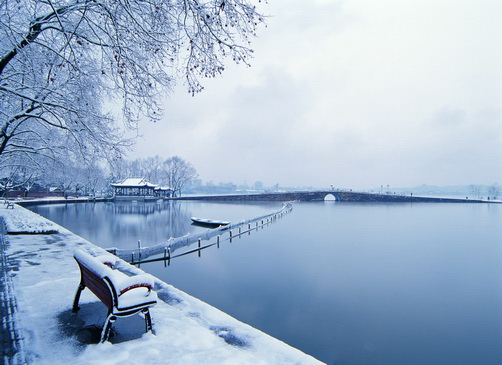
Plum Blossoms on Gushan Mountain: Walking along Gushan Mountain in winter, you’ll encounter clusters of plum blossoms bravely blooming amidst the cold. The vibrant pink and white flowers contrast beautifully against the snow-dusted rocks, offering a striking display of resilience and grace. Plum Blossoms on Gushan Mountain represent purity and perseverance in Chinese culture, and you can sense why they have long been celebrated in poetry, painting, and classical gardens. As you pause to admire them, the crisp winter air and the quiet of the mountains allow you to reflect on themes of renewal, endurance, and the subtle beauty of the season.


Breezy Heights of Wu Hill: Climbing Wu Hill in winter, you’ll feel the brisk, invigorating wind sweeping across the ridges, carrying with it a sense of openness and freedom. The hilltop offers panoramic views of the snow-covered city and the shimmering lake below. Breezy Heights of Wu Hill showcases the stark beauty of winter landscapes, where bare trees and icy reflections create a sense of purity and clarity. You can contemplate the cultural significance of this site, long admired by scholars and poets for its ability to inspire thought, meditation, and an appreciation for the majesty and stillness of nature in the colder months.

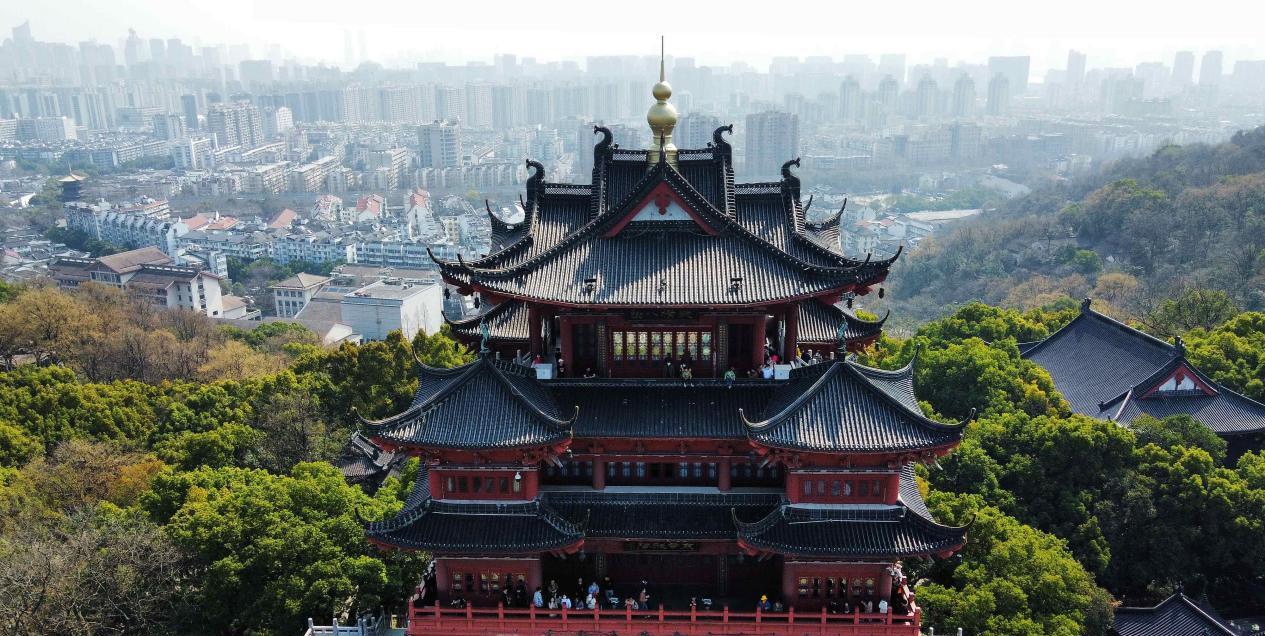
Festivals in Winter
January
New Year’s Day (Jan 1)
Hangzhou greets the new year with a quiet charm. West Lake’s pathways like Broken Bridge and Su Causeway are perfect for an early morning walk, where mist hangs gently over the water and willow branches sway in the crisp winter breeze. Locals enjoy this serene time by jogging, sipping tea in lakeside teahouses, or simply enjoying the clear, quiet air before the tourist season begins.
Laba Festival (8th day of the 12th lunar month)
This traditional Buddhist holiday marks the day when the Buddha attained enlightenment. At ancient temples like Lingyin, monks prepare and offer free bowls of Laba porridge made with rice, nuts, and dried fruits. The spiritual atmosphere, incense smoke, and sound of chanting draw visitors looking to experience a slice of Hangzhou's religious culture in an authentic setting.
February
Chinese New Year (Spring Festival)
The most important festival in China transforms Hangzhou into a sea of red. Streets like Hefang and Qinghefang are decorated with lanterns and spring couplets. Families gather for reunion dinners, and major tourist spots hold festive performances like dragon and lion dances. Though some shops may close for a few days, the air is filled with joy, firecrackers, and a strong sense of tradition.
Lantern Festival (15th day of the lunar new year)
Marking the end of the Spring Festival season, this night is all about lanterns and light. Song Dynasty Town becomes a fairytale scene with illuminated lanterns in all shapes and sizes. Children carry paper lanterns, and families enjoy sweet glutinous rice balls called tangyuan. At West Lake, the reflections of lanterns on the water create a dreamy and romantic atmosphere.
November
Sweet Osmanthus Festival: Manjuelong village and Lingyin’s trails are filled with the scent of golden blossoms—perfect for slow strolls and warm photos.
Autumn Foliage Viewing: Jiuxi and Yang Gong Causeway become flame-colored—great for quiet nature escapes or landscape photography.
West Lake Fair: beginning in October and running into November, this annual event is a cultural celebration that has been a feature of the city since 1929. Both the International Fireworks Show and the Silk Festival are a part of this event.
December
West Lake Winter Charm: Sparse lotus leaves, serene water, and occasional snow turn the lake into a Zen-like wonder.
Christmas Season: Though not traditional, malls like Hubin Yintai and MixC Mall go all-in on decorations, lights, and sales—urban Hangzhou flair meets global holiday style.
Cheapest Month to Visit
January (except during Spring Festival)
January is one of the cheapest times to visit Hangzhou, provided you avoid the Spring Festival period. The cold weather keeps most tourists away, creating a calm and peaceful atmosphere around West Lake and other popular attractions. Hotels typically offer off-season discounts of up to 40%, making it an excellent time for budget-conscious travelers. With fewer crowds, you can also enjoy lower prices on local tours and private car services, perfect for a relaxed, hassle-free trip.
Late February (after the Spring Festival)
Once the Spring Festival celebrations are over, tourism in Hangzhou slows down significantly. Hotels, restaurants, and attractions remain quiet, giving you more space to enjoy the city at your own pace. This period is especially ideal for photography enthusiasts who want to capture serene landscapes without bustling crowds. For slow travelers, late February offers the perfect balance of affordability and tranquility.
Early March (before spring peak season)
Early March marks the transition from winter to spring, making it another great window for budget travelers. Flights and hotels are still relatively cheap before the arrival of peak spring tourism in late March and April. It’s also the best time to visit the tea plantations, such as the famous Longjing Tea Village, before the crowds arrive for the harvest season. With mild weather and lower prices, it’s an excellent opportunity to enjoy outdoor activities and scenic views.
Late November to Mid-December
This period falls between Hangzhou’s vibrant autumn foliage season and the Christmas/New Year holiday rush, making it a hidden gem for budget travelers. Accommodation prices drop, and museums, galleries, and cultural attractions become much less crowded. The crisp air and peaceful lakeside scenery create an intimate travel experience, perfect for those seeking a slower pace and lower costs.
Less Crowded Months
January (except during Spring Festival)
January is one of the quietest months to explore Hangzhou, provided you avoid the busy Spring Festival period. With chilly weather keeping most tourists away, you can enjoy peaceful walks around West Lake and admire its misty winter scenery without the usual crowds. Popular attractions like Lingyin Temple and Hefang Street are significantly less congested, giving you more time and space to soak up the local culture.
Late February (after the Spring Festival)
After the Spring Festival celebrations come to an end, Hangzhou enters a short period of calm. Tourist numbers drop sharply, making late February an ideal time for travelers who prefer a slower pace. Tea villages, museums, and cultural landmarks are pleasantly quiet, allowing for deeper immersion and a more personal travel experience. If you enjoy taking photos without crowds in the background, this is one of the best times to visit.
Early March (before spring peak season)
In early March, before the spring bloom fully arrives, Hangzhou remains relatively uncrowded compared to the later months. While the city begins to warm up, it hasn’t yet reached its high season, so you can still explore West Lake, tea plantations, and botanical gardens without long lines. It’s also a good time to enjoy scenic cycling routes and hiking trails without worrying about heavy foot traffic.
Late November to Mid-December
Following the autumn foliage season and before the year-end holidays, Hangzhou enters another tranquil travel period. Tourist crowds thin out, creating a relaxed atmosphere across the city’s scenic spots. You can stroll along Yanggong Causeway, sip tea in a quiet lakeside pavilion, or visit museums and cultural centers without the pressure of peak-season crowds. This period is especially appealing for those seeking a slower, more immersive experience.
Peak Season/Off-Season
Peak Season (March to May, September to October)
Peak season in Hangzhou coincides with spring and autumn, the two most beautiful times of the year, along with the Christmas holiday period. From March to May, cherry blossoms bloom around West Lake, tea plantations in Longjing burst with fresh greenery, and the weather is pleasantly mild. Similarly, September and October bring crisp air, golden osmanthus blossoms, and vibrant autumn foliage, making these months highly popular among both domestic and international travelers.
Additionally, late December around Christmas has recently become a mini peak season due to festive events and light shows across Hangzhou, especially near Hubin Pedestrian Street and shopping malls. While not as crowded as spring and autumn, accommodations and flight prices may still rise due to increased holiday tourism.
However, peak season also means higher travel costs and larger crowds. Hotel rates and flight prices can increase by 30–50%, and attractions like West Lake, Lingyin Temple, and Hefang Street can become very busy, especially during weekends and holidays. If you plan to visit during these months, it’s best to book accommodations and tickets at least 4–6 weeks in advance. For a better experience, consider exploring early in the morning or visiting less-traveled attractions, such as Meijiawu Tea Village or the Bamboo-Lined Path at Yunqi.
Off-Season (November to February, Late June to August)
Off-season in Hangzhou offers a quieter and more budget-friendly travel experience. From November to February—excluding the Spring Festival period—the city sees fewer tourists, especially around West Lake and nearby temples. Hotels and flights often provide significant discounts, sometimes up to 40% off, making it an excellent choice for budget travelers. The winter atmosphere adds a peaceful charm, with misty mornings and tranquil lakeside walks.
Another off-season window is late June to August, when Hangzhou becomes hot and humid. While daytime temperatures can be challenging, this period also has fewer crowds compared to spring and autumn. It’s a good time to enjoy indoor attractions, shaded tea houses, and night views of West Lake when the weather cools down. For travelers seeking quiet exploration and lower costs, the off-season offers plenty of opportunities to enjoy Hangzhou at a slower pace.
Best time to see West Lake
Spring (March to May)
Spring is one of the most beautiful times to visit West Lake, as the entire area comes alive with blooming peach blossoms, willow trees, and fresh greenery. The famous “Broken Bridge” and “Su Causeway” are particularly scenic during this season, making it a favorite spot for photographers. The mild weather also makes boat rides and cycling around the lake very pleasant.
Summer (June to August)
Summer brings the iconic lotus season at West Lake, especially around Quyuan Garden and Little Paradise (Xiaoyingzhou). Hundreds of lotus flowers bloom across the water, creating a serene and romantic atmosphere. Early mornings and evenings are the best times to visit, as midday can be hot and humid. This is also when West Lake hosts musical fountain shows and evening boat tours.
Autumn (September to November)
Autumn is considered the most poetic season at West Lake, especially from late September to mid-November. The surrounding hills are covered in red and golden foliage, perfectly reflecting on the tranquil waters. Popular spots like “Autumn Moon over the Calm Lake” and “Leifeng Pagoda” offer breathtaking sunset views. The weather is comfortable, making it ideal for long walks or cycling along the lake.
Winter (December to February)
Winter transforms West Lake into a quiet, almost mystical retreat. Crowds thin out significantly, and on rare occasions, the lake area may be dusted with snow, creating a dreamlike scene. This is the perfect time for travelers who prefer a peaceful atmosphere and want to capture unique photographs of the misty lake and serene temples nearby.
Best time to see Maple Leaves
Late October to Early November
The maple leaves around Hangzhou start turning red and golden by late October, marking the beginning of the autumn foliage season. West Lake’s scenic spots like Gushan Hill, Nine Creeks and Eighteen Gullies (Jiuxi Shiba Jian), and Yang Gong Causeway offer stunning early hues. The mild weather makes it comfortable for hiking, cycling, and long walks.
Mid to Late November
This is the peak season for maple viewing in Hangzhou. Places like Manlong Guiyu (????), Lingyin Temple area, and Yuhuang Mountain become covered in vibrant red, orange, and yellow tones. It’s also the busiest time, so visiting early in the morning or on weekdays is recommended to avoid crowds.
Early December
By early December, the late-autumn colors begin to fade, but some high-altitude areas like Jiuxi Scenic Area and Meijiawu Tea Plantation still retain patches of red and gold. This is a good time for travelers who want fewer crowds and a quieter experience while still catching the tail end of the maple season.
Best time to see Longjing Tea Plantation
Early March to Mid-April — Spring Harvest Season
This is the prime time to visit the Longjing Tea Plantation as it coincides with the famous pre-Qingming tea harvest. Fresh tea buds start sprouting in early March, and by late March to early April, tea farmers are busy hand-picking the most tender leaves. The entire plantation is covered in lush green, and visitors can watch traditional tea-picking and roasting techniques up close. It’s also the best time to taste freshly brewed Longjing tea, known for its delicate aroma and smooth flavor.
Late April to May — Late Spring Serenity
After the peak harvest, the crowds thin out, making it ideal for travelers who want a quieter experience. The tea fields remain vibrant green, and the weather is mild and pleasant for hiking or cycling through the plantations. This period is also great for photography, as misty mornings often create a dreamlike atmosphere over the rolling tea hills.
September to Early October — Autumn Tea Picking
Hangzhou’s tea plantations enter a secondary harvest season in early autumn, though the yield is smaller compared to spring. The weather is cooler, the skies are clearer, and you can still see tea farmers working in the fields. Fewer tourists visit during this time, making it perfect for slow travelers who want a peaceful countryside escape.
December to February — Winter Calm
Winter offers a completely different vibe. The tea bushes remain evergreen, but tea production pauses. If you’re seeking tranquility and scenic walks without crowds, this is the season to come. Local teahouses stay open, so you can still enjoy a warm cup of Longjing tea while overlooking the serene hills.
Explore Your Way Holiday's Best Recommended Tours
We design private and Tailor-made Hangzhou Tours customized to your style of travel at affordable local prices. We will provide a private & spacious car and a local professional tour guide with over 5 years guiding experience only work for you or your group. Transport, ticket, and dining (We find the most authentic dishes popular with locals) all we will arrange for you according your requirements. Please check our most popular Hangzhou Tours including The Hangzhou Westlake as below:
Are the above sample tour programs not suitable for you? Dont worry, our Tours Can Be Tailor-made based on your requirements and budget to create unique Hangzhou experiences that allow you to interact with the local people and culture. We are Hangzhou travel experts who know what your guidebook and foreign agencies don't. Our enthusiastic tour expert will promptly reply you in details within 24 hours.
Wechat: Chinaprivatetour
24 Hours Hotline:
+86 137-3541-1378
* Authentic Experiences: Genuine local experiences that immerse you in the true essence of Hangzhou and beyond.
* Safety First: Highest safety standards with secure activities and reliable transportation.
* Customizable Tours: Flexible itineraries tailored to your interests and needs.
* Local Expertise: In-depth knowledge of Hangzhou and China, offering exclusive insights.
* Professional Guides: Licensed bilingual guides with over 5 years of experience.
* Comfortable Travel: Experienced drivers and well-maintained vehicles for a smooth journey.
* Sustainable Tourism: Commitment to responsible tourism and supporting local communities.
* Customer-Focused: Personalized service and continuous improvement based on your feedback.
* Free Cancellation: Cancel up to 24 hours before travel for flexibility and peace of mind.
* 24/7 Support: Round-the-clock assistance for any questions or help needed.
1 to 1 tailor-made service from our professional travel advisors for the most sophisticated
Constantly excellent reviews for attraction, hotel and service Competitive price
Local experts provide quality tours Best selected knowledgeable local guides Authentic local restaurants
7*24 hours available to create you a worry-free tour. No Hidden Fees and absolutely no pressure to buy. Secured








Copyright © 2017 Hangzhouprivatetour.com All rights reserved.